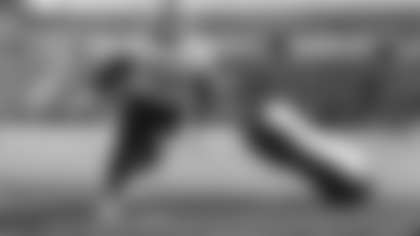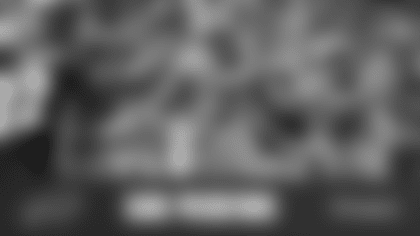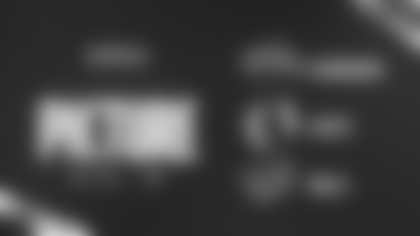Just about everyone in the NFL knew that the new kickoff rule in which the tee would be lined up at the 35-yard line instead of the 30 would change the return game to some degree. Just seven weeks into the 2011 season might be a bit early to draw definitive conclusions with the poorer weather conditions having not yet arrived. What is clear is the Bills have been unable to unleash the return talents of Brad Smith and C.J. Spiller with their opponents forcing Buffalo to take touchbacks at a league-leading pace.
The Bills kick return unit ranks 31st in kick return average with a mark of 19.8. The average drive start the kick return unit is providing Buffalo's offense is last in the league averaging the 19.1-yard line. But one could hardly blame Smith or Spiller.
Of the 30 kickoffs the Bills have fielded this season 24 have gone for touchbacks, good for fourth most in the league. Buffalo's 80 percent touchback percentage is the highest in football. More than even Denver's 77 percent with the Broncos playing three of their first six games in the thin mile high air of their own stadium where the ball carries further.
Smith and Spiller have combined for just six returns in six games. The lack of opportunities has been particularly frustrating for Smith, who was second in the league in kick return average last season (28.2).
"If I said it's been easy I'd be lying to you," Smith told Buffalobills.com. "Coach has stressed how important making good decisions back there are as much as I want to bring it out seven or eight (yards) deep and try to make a play. That sometimes is not the best thing to do."
Bills special teams coordinator Bruce DeHaven believes the kicking game has been dumbed down somewhat by the new kickoff spot and removed a degree of strategy.
"It's really taken a lot of the kickoff return talents out of the game," he said. "It's taken the return element out of the game. We've sat and watch guys kick it out of the back of the end zone four or five times in a row. You're catching the ball going backwards eight or nine yards deep. I don't think it's good football trying to bring that ball out eight yards deep and getting tackled on the 10-yard line. The rewards do not outweigh the risks in that situation."
DeHaven's own returners have proven him correct in that assessment so far. Of the six returns Buffalo has made this season four of them have been stopped shy of their own 20-yard line (66%).
Fortunately the Bills offense has been able to overcome their poor average drive start to still score points, due in part to their defense's ability to take the ball away this season and hand the offense shorter fields.
"That's just a testament to the team and how we've been able to adjust," said Smith.
There's no debating that touchbacks are significantly more frequent this season than last. In 2010 only 17 percent of kickoffs went for touchbacks. Through the first six weeks of 2011 more than 50 percent (50.1%) of kickoffs have been downed or gone through the back of the end zone. In fact the total number of touchbacks in 2010 (416) was already eclipsed by the 2011 total after just six weeks (452).
Some believe as the weather turns colder and wind is more of a factor and the ball becomes more like kicking a rock that there will be shorter kickoffs, and thus more opportunities for returns. DeHaven feels that while the number of return opportunities might increase he's not convinced it will improve the league's average drive start for offenses.
"There will be more return opportunities, but I think one of the really important factors in this is it's not how deep the ball is kicked, it's the fact that the coverage team is five yards closer to the opposite end zone than what they were in the past," he said. "There's just not as much room to operate once that returner comes out of the end zone."
Average drive start for NFL offenses this year (21.8) is about five yards less than it was last season (26.8). Granted there are 10 more weeks of the 2011 season to be played, but it's clear that the running room for returners is not what it used to be with coverage players getting down the field faster with five fewer yards to cover at the kickoff.
"Not only is it harder to get to the 20 when the ball is deep in the end zone, but now with things more cluttered and congested down by the goal line there's a greater chance for penalty or a block in the back," said DeHaven. "If you get a block in the back at the 25-yard line you're starting at the 17 or 18 that's one thing, but now you've got teams starting at the seven or eight-yard line and it's hard to get out of a hole when you're starting there."
The Bills have also faced four of the top eight kickers in the league in touchbacks in their six games, including Sebastian Janikowski, who has 19. Buffalo's Rian Lindell has just 10 touchbacks and his touchback percentage of 28.6 percent is third lowest in football. Booting the ball through the end zone however, is not Buffalo's approach.
"I'm trying to approach it like hitting a 3-wood off the tee in golf," said Lindell. "I want to make sure it's going where it's supposed to go and it's coverable. If I try to go hammer it and it drifts over into the middle of the field then its trouble because the returner can go either way. I'm just concerned with making it a coverable kick because our guys have been running great."
Buffalo's kick coverage has been very, very good this season. Prior to Sunday's games Buffalo ranked fourth in the league in kick coverage (19.7 avg) and fifth in opponent's average drive start (20.3). Had Lindell not put his first kickoff against the Giants out of bounds giving New York a drive start at their own 40, that drive start figure would still be less than the 20-yard line, something better than a touchback provides.
"I'm disappointed in our kickoff returns because we're starting at the 20 so many times and Brad is a valuable weapon in that area," said head coach Chan Gailey. "But at the same time our kickoff coverage has been pretty good. We're near the top of the league in tackles inside the 20. If we can keep doing that then I'll take the swap."
Following their bye Buffalo is tied for third in the league in tackles inside the 20 on kickoffs with 11. Only New England (12) and the Jets (14) have more.
When covering kicks DeHaven has preached hang time and accuracy as the two most important factors for Lindell.
"This is the way we approached it when I was here the first time in Buffalo when the kickoff was at the 35-yard line," said DeHaven. "We put a premium on hang time and kicking the ball outside the numbers. We just felt they would run out of room just pinning them in along the sideline."
DeHaven agrees that there's likely to be more return opportunities later in the season when wind and colder temperatures affect the flight path, hang time and distance of the kickoffs, and that could be where Buffalo's coverage units will have an advantage.
The Bills kick coverage team has had to cover and make the play on 25 kickoffs already this season, good for third most in the league.
"There are some of these teams that haven't had to cover any kicks," said DeHaven. "Now if they get to a point where they do it's just not the same when you just run down there and you don't actually have to play off of blocks and everything like that. It's going to be a little more difficult. The fact that we've been able to coach our guys up because we have covered a lot of kicks should help."
Buffalo's kick return unit would like to bring their numbers more in line with what the kick coverage unit has been able to accomplish this season. All Brad Smith wants are some opportunities. He's hopeful the colder weather provides more of them. Until then the talented return man is just trying to be patient.
"We're going to keep working and get reps," he said. "Even though we haven't been running them back they've been blocking great. We're just going to keep getting better as more opportunities come and we keep evolving and growing. There's still a lot out there for us."






